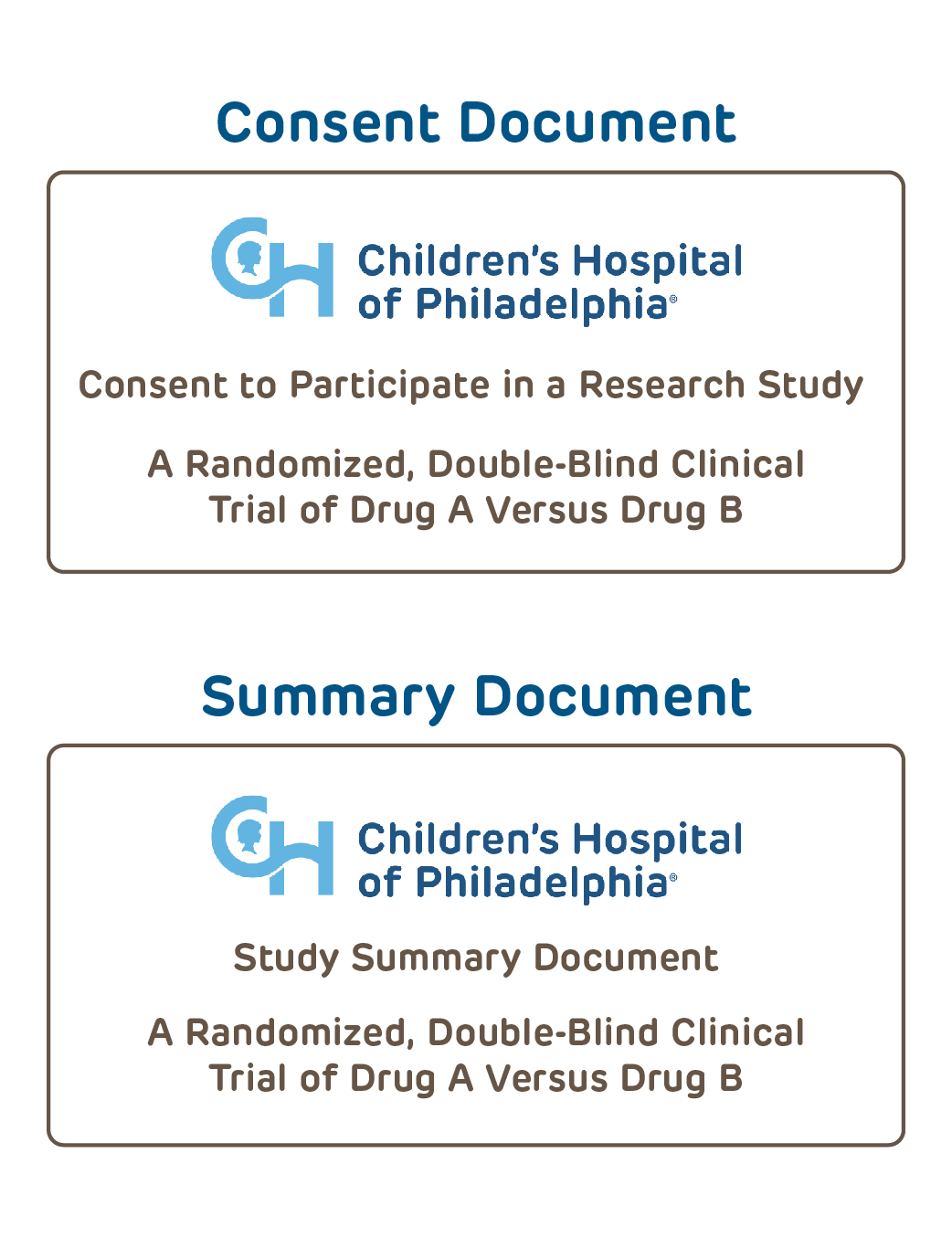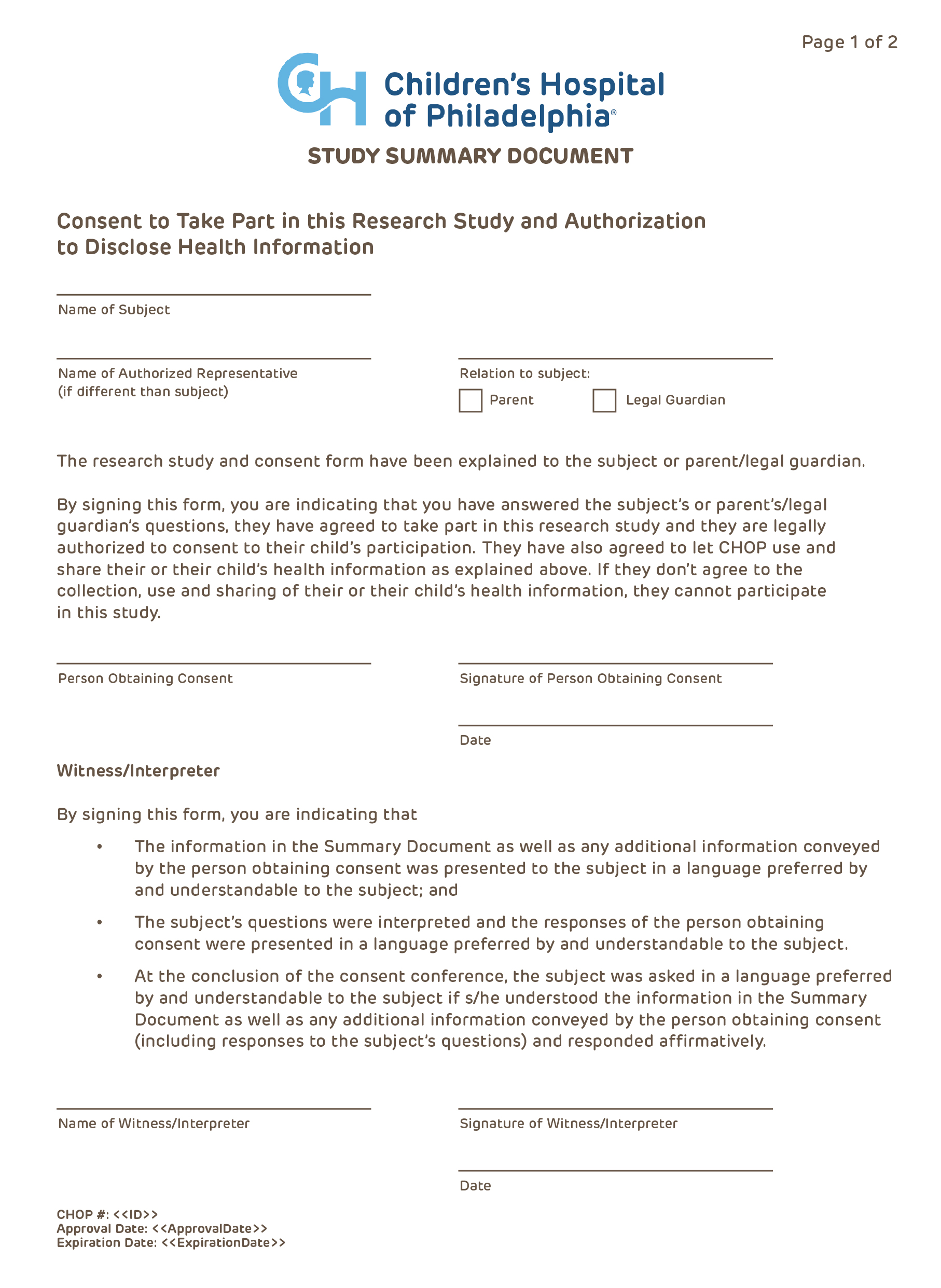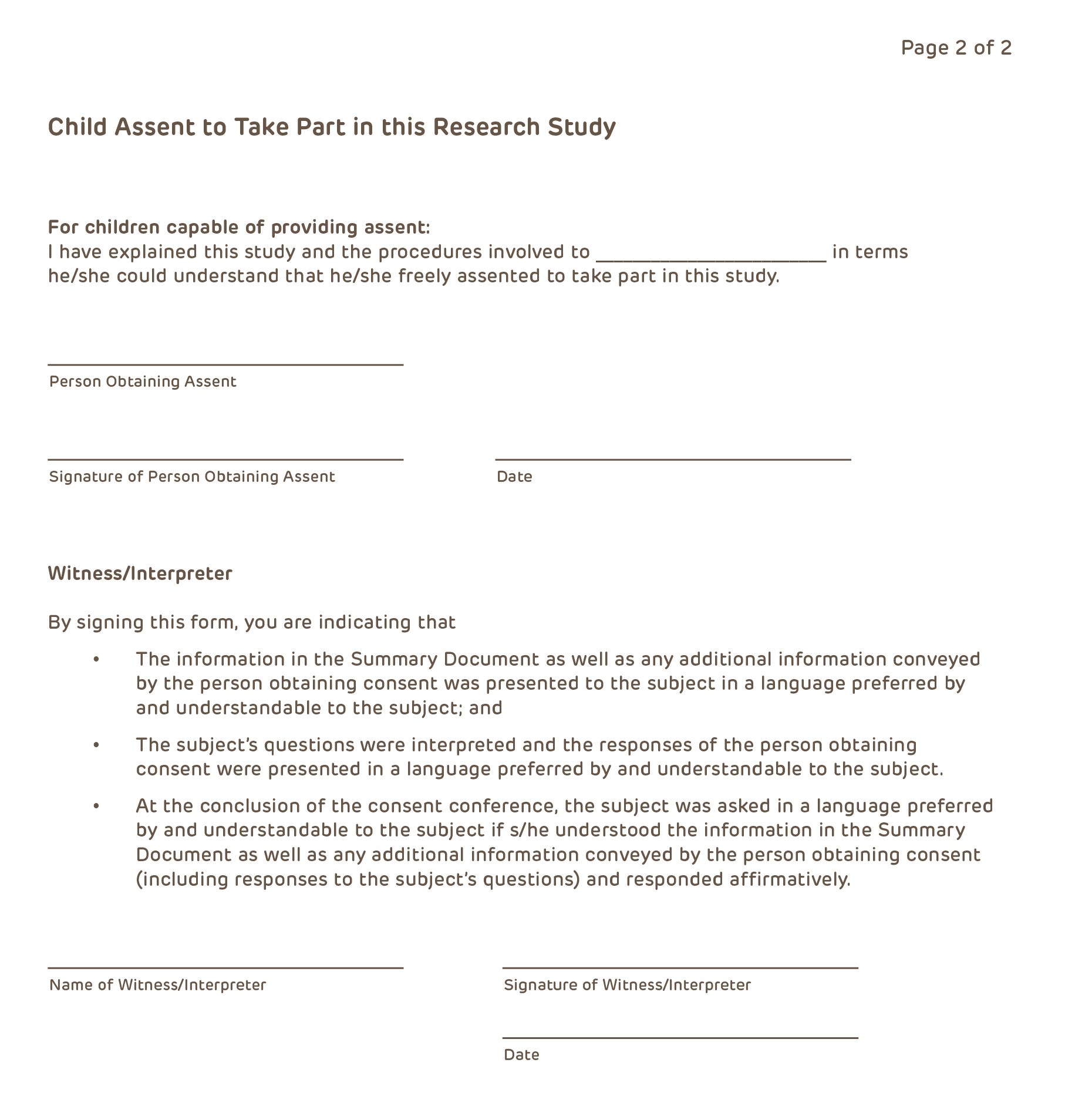HOW CAN WE HELP YOU? Call 1-800-TRY-CHOP
In This Section
Consent from Subjects with Limited English Proficiency (Short Form Consent)
Short form consent is an alternative to using a translated consent form, for use when few limited English proficiency speakers are expected or when few subjects who speak a particular language are expected (if at all). The short form consent form is a document, translated into the subject's preferred language, that contains a description of the required elements of informed consent and notes that these elements, as they pertain to the study, will be presented orally to the subject or legally authorized representative. The short form document templates are available on the Short Form Consent Forms page.
Short Form Consent Document:
A brief document, written in the subject's preferred language. The short form consent document must contain the following:
-
a description of the required elements of informed consent (including a concise statement if the 2018 Final Rule applies);
-
an explanation that the purpose of the research, the study procedures and the other required elements in the consent form will be presented to the subject, or legally authorized representative in their preferred language.
Short form consent documents in some languages are already available on Short Form Consent Forms.
If you are using one of these forms, then there is no need to submit the specific short form documents to the IRB. If you are creating a new short form document, then it must be submitted to the IRB along with a certification of translation prior to use. The translation should be based on the English version of the short form document.
The short form documents are locked and should not be altered except to do the following (in English):
- Protocol title
- PI name and contact phone number
- Emergency contact person and phone number
Summary Document:
The IRB- approved standard informed consent form can be used as a guide to creating the summary document. This form should be modified to include the following:
-
List Summary Document at the top instead of Informed Consent Form;
-
A signature section with signature lines for the person obtaining consent and for the witness.
See Preparing a Summary Document at the bottom of this page for instructions on how to convert an informed consent form into a study summary document
Interpreter:
A person who (a) understands both English and the subject's preferred language and (b) is not part of the study team or otherwise involved with the study. This individual may also serve as the witness when the Short Form Consent process is used. The interpreter must comply with the CHOP Language Services Policy.
Witness:
A person that (a) understands both English and the subject's preferred language and (b) is not part of the study team or otherwise involved with the study, and witnesses the consent process. This can be an interpreter assisting the person obtaining consent.
Short Form Consent Process
- Summary Document (in English)
- Short Form Consent in Subject's Preferred Language
- Individual(s) who speaks English and the subject's preferred language to serve as
- Interpreter
- Witness
The investigator presents the consent information to the subject (parent/guardian) using an interpreter. The interpreter must be fluent in both English and the preferred language of the subject (parent/guardian) and may serve as the witness, provided that they are not otherwise involved in the study. Consent is then documented on both a Short Form Consent form in the subject's preferred language and on a Study Summary Document.
Interpreters and Witnesses
Guidance for Interpreters and Witnesses
Responsibilities of the interpreter
The interpreter must be fluent in both English and the preferred language of the subject (parent/guardian). When the investigator presents the consent information to the subject (parent/guardian) the interpreter presents the information in the subject's (parent/guardian) preferred language.
Serving as a witness to the short form consent process
Either the interpreter or a second individual (fluent in both languages) can serve as the witness. The witness cannot be otherwise involved in the study. The witness can be a family member, friend, a clinic nurse who is not involved in the study, or anyone 18 years or older.
Meaning of attestation to the short form consent process
With his/her signatures, the witness documents the following:
-
The information in the Summary Document as well as any additional information conveyed by the person obtaining consent was presented to the subject in a language preferred by and understandable to the subject; and
-
The subject's questions were interpreted and the responses of the person obtaining consent were presented in a language preferred by and understandable to the subject.
-
At the conclusion of the consent conference, the subject was asked in a language preferred by and understandable to the subject if s/he understood the information in the Summary Document as well as any additional information conveyed by the person obtaining consent (including responses to the subject's questions) and responded affirmatively.
Converting the Consent Form into a Summary Document
Only two changes are needed to convert a consent form into a Summary Document.
-
The title of the informed consent document header should be changed to Study Summary Document.
-
The signature page needs to be revised. Only the investigator and the witness sign the signature page of the Summary Document.
Summary Document Header

Summary Document Required Signatures


Frequently Asked Questions
-
Do I need to submit the Short Form Consent documents?
No. The IRB no longer requires the investigator to upload the short form consent documents that are already available on the IRB's website. These documents are locked and are already certified translations. The investigator only needs to submit a Study Summary Document.
-
When may the short form consent process be used instead of a translated consent form?
The short form written consent is intended when few subjects with limited English proficiency (if any) are expected to enroll.
The short form consent process is ideal for situations where a subject whose preferred language is not English presents unexpectedly and a translated consent form is not available. If many subjects with limited English proficiency are expected to enroll, then a translated consent form should be used rather than the using a short form consent document.
-
Who needs to sign the short form consent document and the summary document?
These forms are signed by the individuals who understand the information on the individual form. The short form (in the subject’s preferred language) will be signed by the subject and the interpreter/witness. The study summary document (in English) will be signed by the study team member and the interpreter/witness. The Summary Document signatures attest that the information in the document was presented to the subject and that their questions were answered. The signatures on the short form document that the subject understood the information presented.
-
Is the witness certifying the medical accuracy of the information provided by the investigator or the Study Summary Document?
No, the witness is not certifying the accuracy of the medical information. The witness is attesting that the information has been presented in a language understandable to the subject, and that the subject understood the information.